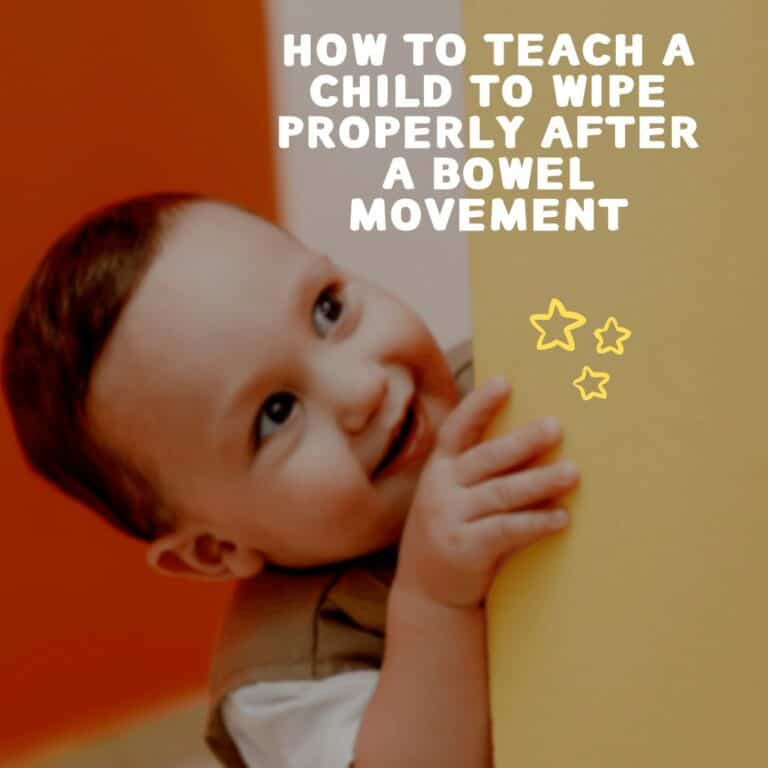Are you wondering when your baby’s first teeth will come in? Are you looking for tips and advice to help your little one through the teething process? Look no further! In this blog post, we’ll provide an overview of what baby teeth come in first, as well as helpful tips on how to make the experience easier.
Introduction to Baby Teeth
Babies typically begin to get their first teeth between 6 and 12 months of age. These are the lower front teeth, also known as the lower central incisors. Most children have all 20 primary teeth by the time they are three years old. Primary teeth help babies learn how to chew and speak, as well as providing spaces for the permanent teeth when they come in later. They also help give your face its shape and form.
At birth, people usually have 20 baby (primary) teeth already present in their jaws. These typically begin to appear when a baby is between 6-12 months old, beginning with the bottom front teeth (lower central incisors). Other primary teeth follow in no particular order, although many times the upper incisors come after the bottom ones. At about six years of age, four permanent molars erupt behind the child’s baby teeth on both sides of their jaw.
It’s important to take care of your child’s baby teeth so that their permanent adult teeth can come in healthy and strong. Regular brushing with fluoridated toothpaste, flossing daily and regular visits to your dentist can help ensure that your child’s smile will last a lifetime!
Order of Appearance for Baby Teeth
When it comes to baby teeth, there is a general order in which they appear. For most babies, the bottom front teeth (called lower central incisors) are the first to come in, usually between six and 12 months of age. This is followed by the bottom middle teeth at five to 10 months. After that, your baby’s teeth will continue emerging until all 20 primary teeth are present.
Premature babies may experience different timelines for their teeth growth due to their early birth date. Some children may also inherit an earlier or later set of teeth from their parents.
By age five or six your child will start losing baby teeth as adult teeth come in and take their place. During this time you may notice a mix of both baby and adult teeth in your child’s mouth as they transition into having all of their permanent adult set of teeth by around age 12 or 13.
Baby teeth are important for proper chewing and speaking abilities as well as helping give your face its shape and form. If you have questions about your child’s oral health care during this time, be sure to speak with your pediatric dentist for advice on how best to care for them properly!
First Teeth: Lower Central Incisors

For many babies, the bottom front teeth, also known as lower central incisors, are usually the first to appear. These typically erupt around 6 to 12 months of age and are usually followed by the two top front teeth. After that, other baby teeth will start to emerge in a predictable order. It is important for parents to watch for signs of teething and be prepared for any discomfort or changes in their baby’s behavior during this time. Teething can be a difficult experience for both babies and parents, but it is an important milestone in their development!
Second Teeth: Upper Central Incisors

The second teeth to come in are typically the upper central incisors, which usually start appearing around 8-12 months of age. These teeth are located near the center of the top jaw and are often referred to as “top front teeth” or “upper front teeth.” They help with biting and chewing food, as well as speaking clearly. Parents can help keep these teeth healthy by brushing them twice a day with fluoride toothpaste and avoiding sugary snacks and drinks. It is important for parents to regularly check their children’s teeth for signs of decay or other issues, so they can get any necessary treatment quickly.
Third Teeth: Upper and Lower Lateral Incisors
The third teeth to come in for babies are the upper and lower lateral incisors. These teeth typically erupt when a baby is between 10-16 months old. The lower central incisors generally come in first, around 6-10 months of age. After that, the upper and lower lateral incisors will usually follow shortly after.
These teeth are important because they help your little one chew food and learn how to properly form words when speaking. They also help create an attractive smile! It’s important to take care of these teeth by brushing them at least twice a day, flossing at least once a day, and visiting the dentist regularly for checkups.
It’s normal for babies to get some discomfort while they’re teething; however, there are things you can do to make them more comfortable during this time. For example, you can give your baby a cold object (like a teething ring) or give them something hard to chew on (like crackers). Additionally, be sure to monitor their behavior and make sure it isn’t too extreme; if it is, contact your doctor right away.
Overall, the upper and lower lateral incisors are an important part of your child’s oral health development! Make sure you’re taking care of them properly so that they’ll stay healthy as they grow up!
Fourth and Fifth Teeth: The Canines or Cuspids

The fourth and fifth teeth to come in are the canines or cuspids. These are the pointy teeth beside the lateral incisors. They help give your face its shape and form. At birth, people usually have 20 baby (primary) teeth, which start to come in (erupt) at around 6 months of age. The lower central incisors usually appear first at 6-10 months of age, followed by the upper central incisors at 8-12 months of age. The lower canines or cuspids will then follow at 16-22 months, with the upper canines appearing between 10-12 years old. After that, the first molars emerge at 13-19 months for the lower jaw and 9-11 years for the upper jaw. These primary teeth are then replaced by adult teeth as your child grows up. Knowing when baby teeth come in is essential for proper oral care and development.
Sixth & Seventh Teeth: First Molars
The sixth and seventh teeth to appear in a baby’s mouth are the first molars, which usually come in between the ages of 14 to 18 months. These molars are located at the back of the mouth, behind both upper and lower rows of teeth. They play an important role in chewing and grinding food.
First molars are larger than other baby teeth and have five cusps (raised points). This helps them perform their grinding function. The top side of these molars has a flat surface for gnawing food, while the bottom side is shaped more like a spoon for scooping up pieces of food that have been cut by other teeth.
First molars can sometimes be difficult for babies to get used to as they may be sore or tender due to their large size. It’s important that parents take extra care when brushing their babies’ first molars, as they can be more prone to cavities than other baby teeth due to their location at the back of the mouth and lack of natural protection from saliva or toothbrush bristles. Regular dental visits with your child’s dentist will help ensure that all baby teeth remain healthy until they fall out naturally during early childhood years.
Eighth & Ninth Teeth: Second Molars

The eighth and ninth teeth to come in are the second molars. These teeth usually appear between the ages of 12 and 24 months, at the back of your child’s mouth. Second molars are important for chewing and grinding up food. They are larger than the other primary baby teeth, and they help to keep space in your child’s mouth for their adult teeth. It is important to maintain good oral hygiene practices with these new teeth, as cavities can form easily when food particles become trapped between them. Regular visits to your dentist will also help keep your child’s second molars healthy.
Tenth & Eleventh Teeth: Third Molars (Wisdom teeth)

Third molars, also known as wisdom teeth, are the tenth and eleventh teeth to appear in the mouth. They typically emerge between the ages of 17 and 21 and are the last permanent teeth to erupt. These teeth may not have enough room in the mouth to properly erupt, leading to impaction or crowding of other teeth. It is common for people to get their third molars extracted if they cause dental issues or put other teeth at risk.
Third molars may be single-rooted or multi-rooted depending on their location in the jawbone. Single-rooted third molars usually don’t require special treatment, while multi-rooted ones may need surgical intervention. Impacted wisdom teeth can lead to infection, pain and difficulty eating. If you experience any of these symptoms it is important that you contact your dentist immediately.
To prevent future problems with your third molars it is important that you practice good oral hygiene habits such as brushing twice a day, flossing daily and visiting your dentist regularly for professional cleanings and checkups. This will help keep your wisdom teeth healthy and prevent any potential dental issues from arising in the future.
When Should You Expect Baby’s First Tooth?

If you’re a new parent, you may be wondering when your baby will get their first tooth. Teething is an exciting milestone in your little one’s life and it typically begins between three and six months of age. While every baby is different, most babies get their first tooth around four to six months old.
Fluoride should be added to your child’s diet at 6 months of age, so it can help strengthen teeth as they come in. When teething starts, you may notice your baby becoming fussy, drooling often and wanting to chew on things. This is completely normal! You can also expect the bottom front teeth (also known as lower central incisors) to appear first when teething starts.
It’s important to begin brushing your baby’s teeth twice a day once they have erupted, so a soft-bristle baby toothbrush with fluoride toothpaste should be purchased beforehand. To help ease any discomfort during this time, try giving them something cold or damp burp cloths to chew on for relief!
Overall, teething can start anytime between three and nine months of age and it’s an exciting milestone for parents as well as children! Be sure to add fluoride into their diet from 6 months old, purchase a soft-bristle toothbrush with fluoride toothpaste before the first tooth appears and provide them with some relief from the discomfort of teething by using cold or damp items for them to chew on!
Are There Any Variations in the Order of Appearance?
When it comes to baby teeth, there is usually a general order in which they appear. Typically, the bottom front teeth (central incisors) are the first to come in. These typically emerge between five months and 10 months of age. After these, the two top front teeth (central incisors) usually come in at around eight to 12 months of age. The remaining baby teeth then typically follow in a sequence that is determined by each individual child’s genetics.
In some cases, however, there can be variations in the order of appearance of baby teeth. For example, sometimes the lateral incisors (the two upper and lower side teeth next to the central incisors) may come in before the central incisors do. In addition, sometimes molars or canines may erupt before other baby teeth have had a chance to come through. In rare cases, some children may even have their first permanent tooth appear before all of their baby teeth have emerged!
Knowing which order your child’s baby teeth will appear is helpful for keeping an eye out for any potential issues or delays with their dental development. If you ever notice any irregularities or discrepancies with your child’s teething timeline, always contact your dentist so that they can take a look and provide guidance on how best to proceed.
Wrapping Up
Wrapping up, it’s important to remember that baby teeth come in at different times and stages. The first tooth typically erupts around 6-10 months, with other teeth following shortly after. Teething can be painful for babies and often causes increased drooling, fussiness, and gum sensitivity. To help your little one through this transition period, provide them with teething toys and plenty of cold items to chew on. Finally, make sure you start brushing their teeth as soon as they come in – even if it’s just a soft cloth or brush with water – to get them used to a dental routine early on.



